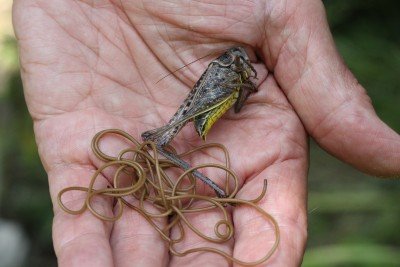
Wolf worms, scientifically known as *larvae of the botfly*, can infest small mammals, leading to some serious health issues. Just as a soccer player can’t perform at their best with a sprained ankle, small mammals can’t thrive when dealing with these parasites. So, how do wolf worms disrupt the life of these creatures? Grab a cup of coffee, and let’s break it down.
What Are Wolf Worms?
Wolf worms are not your typical worms; they are actually the larvae of the **Cuterebra** botfly. These little guys sneak into the bodies of small mammals, often through their skin. Imagine a tiny invader that occupies a host’s body, much like an unwelcome houseguest.
Once inside, these larvae begin to grow and develop. They may even create a small breathing hole in the host’s skin, which can look pretty alarming. You might be thinking, “How do they even get there?” Well, female botflies usually lay their eggs near burrows or nests. When a small mammal passes by, the eggs hatch and attach themselves to the host. It’s a gross but fascinating part of nature!
How Do Wolf Worms Infest Small Mammals?
Let’s unpack the method of infestation a bit. It often starts innocently enough. The botfly lays its eggs close to where small mammals frequent. When our furry friends come into contact with the eggs, they hatch, and the larvae get a free ride into the bloodstream or under the skin.
Once they’re inside, they start their growth cycle. Imagine a tiny creature turning your home into its playground—only, this time, it’s happening inside the body of an unsuspecting animal. This invasion can lead to significant health issues, which we’ll explore next.
Health Issues Caused by Wolf Worm Infestation
When wolf worms infest small mammals, they can cause various health problems. You might wonder how such a tiny creature can create such havoc. Well, the larvae can damage tissues, cause infections, and lead to a lot of pain for the host.
The most visible sign of infestation is the **breathing hole** in the skin, which can get inflamed and infected. You can think of it like a sore that just won’t heal. In severe cases, the host might become lethargic, lose weight, or even be more vulnerable to predators. If an animal is sick, it can’t run as fast or hide as well, which could be a death sentence in the wild.
So, why does this matter? Well, these issues can affect not only individual animals but also the overall population of small mammals in an ecosystem. When health declines, it can lead to fewer animals reproducing, ultimately throwing the balance of the ecosystem out of whack.
The Lifecycle of Wolf Worms
To better understand the impact of wolf worms, let’s look at their lifecycle. After the larvae invade a small mammal, they spend several weeks growing and feeding off the host’s tissues.
Here’s a quick breakdown:
- Egg Stage: Female botflies lay eggs near small mammal habitats.
- Lava Stage: Once they hatch, they attach to the host’s skin, entering the body.
- Pupal Stage: After maturing, they exit the host to pupate in the soil.
- Adult Stage: Finally, they emerge as adult botflies to repeat the cycle.
This cyclical nature means that the problem doesn’t just go away. An individual host can carry several larvae, and with each cycle, the potential for infestation increases.
Preventing Wolf Worm Infestation in Small Mammals
You might be thinking, “Isn’t there a way to help these small mammals?” While we can’t control nature entirely, there are ways to protect them. If you have pets or live near areas where wild mammals roam, here are some tips:
- Monitor Wildlife: Keep an eye on local wildlife and look out for signs of infestation, such as swelling around the skin.
- Habitat Management: Maintain a clean environment to minimize the presence of botflies.
- Educate Others: Share information about wolf worms with your community to raise awareness.
By promoting healthy habitats and a better understanding of these infestations, we can hopefully reduce the impact of wolf worms on small mammal populations.
The Role of Small Mammals in the Ecosystem
Understanding wolf worms also means recognizing the crucial role small mammals play in our ecosystems. These creatures are often prey for larger animals and contribute to the balance of nature. When their populations decline due to parasites like wolf worms, other parts of the food chain can be affected.
For example, if rabbit populations drop, foxes might find it harder to find food. This creates a ripple effect throughout the ecosystem. Every species has its place, and it’s essential to keep that balance intact.
Wolf worms might sound like something out of a science fiction novel, but they are very real and impact small mammals profoundly. From their unique lifecycle to the challenges they pose for these animals, it’s clear that they play a significant role in the natural world.
By understanding how wolf worms affect small mammals, we can appreciate the complexity of ecosystems and the delicate balance of life. Let’s continue to observe these remarkable creatures while also finding ways to protect our furry friends in the wild. After all, nature is a beautifully intertwining web, and every thread counts!
